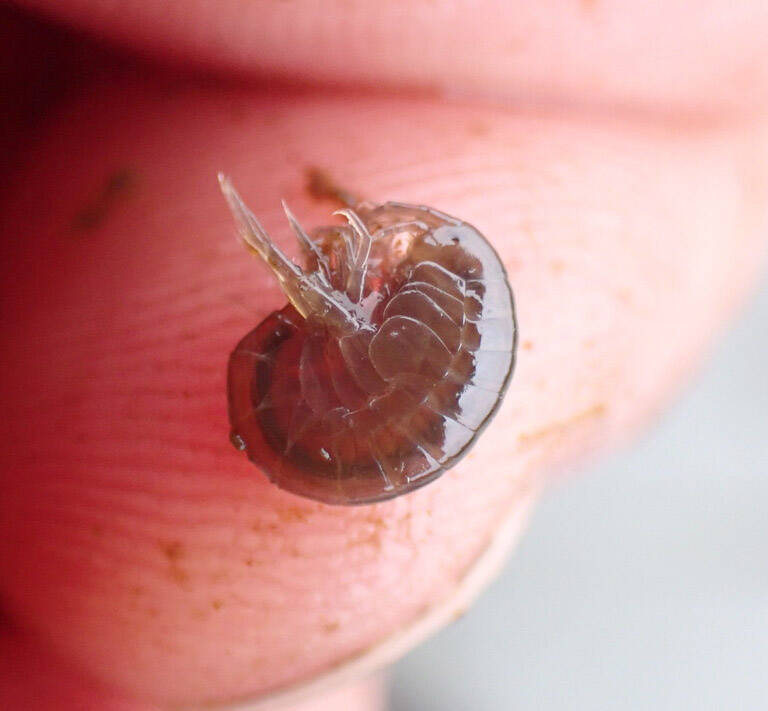This October, the Alaska Department of Fish and Game applied rotenone, a fish-killing pesticide, to Vogel Lake, North Vogel Lake and Miller Creek in the remote Miller Creek drainage near Point Possession.
Since the discovery of northern pike there in 2019, two years of preparation and collaboration among ADF&G, U.S. Fish and Wildlife Service, the Kenai Watershed Forum and the Cook Inlet Aquaculture Association culminated in this effort to remove the last known population of invasive northern pike on the Kenai Peninsula.
Before the rotenone was applied, teams from ADF&G, KWF and CIAA captured 883 native fish from these waters. They transported native trout and salmon into an adjacent lake, where the fish now reside safe from the rotenone.
The rotenone in the Miller Creek drainage is monitored throughout the winter and is currently diminishing. As a result, these waters should soon be habitable again for fish and invertebrates. When the watershed is ready, the captured native fish will be released to repopulate the streams and lakes.
The Miller Creek watershed is also home to a diverse community of aquatic invertebrates like snails, mussels, dragonfly nymphs, freshwater shrimps, caddisflies, mayflies and zooplankton. Some invertebrates, like the tiny crustaceans that make up the zooplankton, are quite susceptible to rotenone, while other invertebrates are more tolerant.
Whether or not we care about these tiny animals themselves, fish depend on them as food. Put simply, the native fish will not do well without insects, plankton and other small animals to eat!
Thankfully, invertebrates usually come back quite well. In past rotenone treatments in Southcentral Alaska waters, most invertebrates returned within one to two years. Invertebrates can be remarkably resilient, with multiple strategies for surviving and recolonizing.
Water fleas, which make up an important part of the plankton in lakes, produce resting eggs that are resistant to rotenone, so they should soon reappear. Most insects can fly as adults, enabling insects from neighboring water bodies to quickly spread back into the area.
Even freshwater mussels, which do not look like they can get very far, can. The tiny young mussels latch onto fish and remain on the fish while completing part of their development.
When the mussels drop off to make their homes on the bottom sediment, they may find themselves far from their parents. Freshwater invertebrates can also repopulate the Miller Creek watershed through streams that connect the lakes, ponds and wetlands.
Even though we know from previous experience that the invertebrates should return soon, we should check. The standard way to look for recovery is to survey invertebrates before and after rotenone treatment and compare the pre- and post-treatment invertebrate communities.
In July through September this year, teams from ADF&G, USFWS and KWF sampled invertebrates ahead of treatment. We scooped nets through lakeshore vegetation, picked minute creatures from under rocks in Miller Creek, dredged sediment from the bottom of the lakes, and towed plankton nets up from the depths.
This fall and winter we have been looking through these samples to identify them. Some specimens we are processing the old-fashioned way with forceps, microscopes and identification guides, the way that these kinds of studies have been done in Southcentral Alaska in the past. This earlier method works, but it is time-consuming and cannot identify some species.
To get a complete picture, including species that we cannot easily identify the old-fashioned way, we mailed off 32 vials full of invertebrates to a genetics lab in Texas to be ground up and identified using DNA sequencing methods. These methods enable us to learn about whole communities of species simultaneously.
We recently received the genetic data and we are going through it, identifying species from their DNA sequences. So far, it looks like the DNA sequencing methods worked well, providing identifications of many species that I would not have been able to identify using a microscope.
I enjoyed going over the specimens and genetic data and learning about the little animals from the Miller Creek drainage. So far, the most exciting find has been a black spongillafly, an unusual relative of an insect called the green lacewing.
You may be familiar with the green lacewing, an insect that farmers tend to encourage because they feed on other insects that harm plants. The black spongillafly spends part of its life underwater, where it grazes on a specialized diet of freshwater sponges.
At the water’s edge we saw six-spotted fishing spiders, which plunge down into the water to capture their prey. In open water, we found the glass water flea, a giant (for a water flea), half-inch long, nearly invisible predator, that catches other water fleas.
In Miller Creek, we collected the rectilinear net-spinning caddisfly, which builds silken nets to strain food from streams. We also found many other intriguing animals.
Next summer, we will return to the same places at about the same time of year to collect samples that we can compare to what we collected before the rotenone treatment in 2021. When we pore over that second set of samples next winter, we will better understand how invertebrates recover from rotenone treatment in the Miller Creek watershed.
Matt Bowser serves as Fish and Wildlife Biologist at Kenai National Wildlife Refuge. Find more Refuge Notebook articles (1999–present) at https://www.fws.gov/refuge/Kenai/community/refuge_notebook.html.


